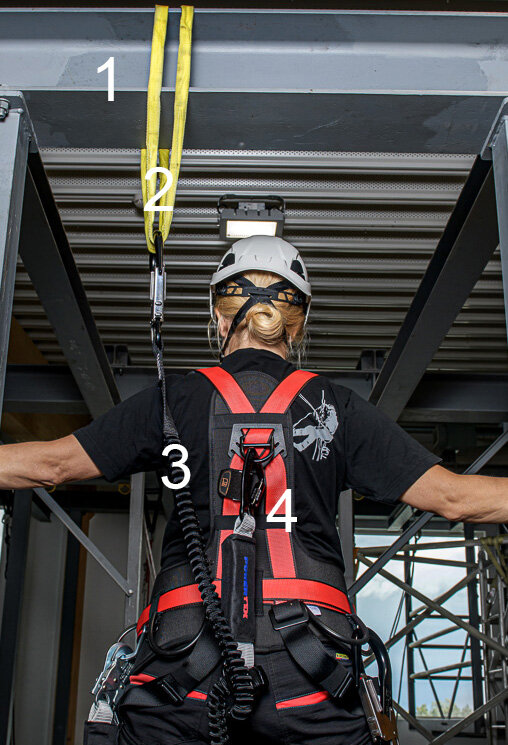Fundamental Understanding of Fall Protection Equipment

Comprehensive knowledge of fall protection equipment is imperative, guided by regulations stating that any worker operating 2 meters or more above a lower level must be safeguarded against falls. Compliance involves adhering to directive NS 9610 (2020).
Breaking down the essential components into Items 1, 2, 3, and 4 forms a holistic personal fall protection system, capable of mitigating or preventing fall-related injuries when correctly implemented. However, strict adherence to all four items in accordance with existing legislation is crucial for effective personal fall protection.
-
Anchorage Connector
Regulated by EN 795, the anchorage connector, whether a beam, security fence, welded construction, or temporary horizontal wire, must withstand a static load of at least 12 kN in 3 minutes. Optimal positioning, both in height and vertical alignment, minimizes fall risks, preventing pendulum effects and contact with lower levels in case of a fall.
-
Connecting Device
The connecting device acts as the pivotal link between the anchorage connector and the fall protection equipment, such as slings, steel lines, or carabiners. Complying with EN 362, it must endure a load of no less than 15 kN in 3 minutes.
-
Shock-Absorbing Device
Integrated into the anchorage line or the fall arrest block, shock-absorbing devices, meeting EN 365 standards, ensure the body experiences no more than 6 kN of stress. Strict adherence to this standard is vital to prevent potential deadly damage to internal organs during a fall.
-
Harness
Worn by the user, the harness is a crucial component of the personal protection system, satisfying EN 361 requirements. Choosing the appropriate harness depends on factors such as use, environment, and the nature of the work.
For more information on fall protection analyses, specialized brochures, or additional fall protection training, please contact Certex Norway.

Do you wish to know more about fall arrest equipment? Reach out to our expert today!
For faster response, call us directly at +47 468 46 232
ConsiderationsIt is crucial to adhere to regulations specifying that individuals performing tasks where there is a risk of falling from two meters or more must implement protective measures to mitigate such risks. |
Learn more |
Fundamental UnderstandingBreaking down the essential components into items forms a holistic personal fall protection system. |
Learn more |
Height Work RisksTo ensure the efficacy of fall protection in the event of a descent, three critical factors demand consideration. |
Learn more |
Preparation GuidelinesEmbarking on work at significant heights demands not only the correct equipment but also adept handling from you as a user. |
Learn more |


